In this post I will cover:
- How to paint fall leaves in watercolor step by step
- Color theory
- Wet in to wet painting
- Creating texture effects
Materials List
Ultramarine Blue: Winsor & Newton | Daniel Smith
New Gamboge: Winsor & Newton | Daniel Smith
Burnt Umber : Winsor & Newton | Daniel Smith
Alizarin Crimson: Winsor & Newton | Daniel Smith
Paynes Gray: Winsor & Newton | Daniel Smith
Burnt Sienna: Winsor & Newton | Daniel Smith
Brushes
No. 2 Squirrel Hair Mop Brush Buy from Amazon
Rigger Brush ( For thin tree branches etc) Buy from Amazon
Paper
Arches Watercolor Paper Block, Cold Press, 9″ x 12″, 140 pound Buy from Amazon
Miscellaneous
Easy release painters masking tape Buy from Amazon
Composing The Painting
Autumn leaves make a fascinating subject for a still life. Their simplicity of form provides us with a subject that can be approached in several ways An abstract approach could be a pure study in shape, color, texture and composition. Whereas a realistic approach would focus on the purely representational. This particular painting has elements of all these so it’s somewhere in between but that’s o.k. There are no rules, only possibilities!

I found this little collection of leaves in my garden. In case you were wondering, it consists of a couple Poplar leaves (The two large ones) , an Oak (The small one) and I think, a native New Zealand Pohutukawa leaf (The long skinny one). I arranged them in various configurations until I settled on the composition above. They remind me of a group of arrowheads, giving a sense of movement and leading the eye in different directions.
The colours in fall leaves are naturally harmonious, as they are all on the warm side of the colour wheel. Even the green leaf is still a very warm green that leans strongly towards yellow.
Although the color wheel can help us understand the relationship that colors have to each other, it’s not the whole story. The color wheel tells us nothing about neutrals. ie earth colors that are so prevalent in Autumn leaves. I’ve included Burnt Umber and Burnt Sienna in my palette purely for convenience but those can be mixed too.
Tip
Neutral colors similar to Burnt Umber and Burnt Sienna can be mixed by combining the three primaries and altering the proportions of red, yellow and blue.
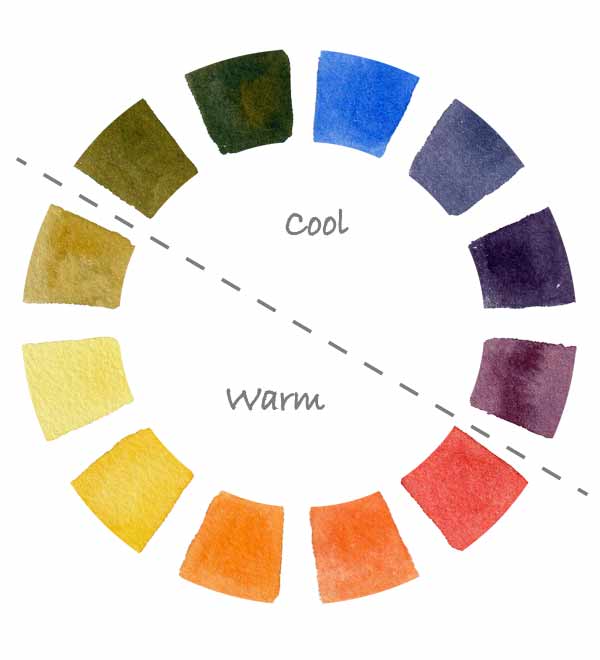
Painting Fall Leaves In Watercolor Step By Step
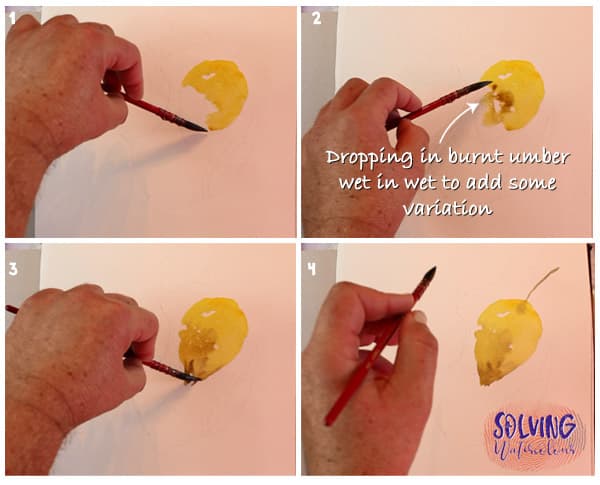
- Start with a very light drawing of the leaves, mix up a warm yellow / green, consisting of New Gamboge and a small amount of Ultramarine. Although I’m using a mop brush a round brush would work just as well.
- Drop in a little Burnt Umber wet in wet. This creates a nice color variation.
- Continue pulling the paint down into a point. Avoid the temptation to do too much brushing and smoothing out, just allow the Burnt Umber to flow wherever it chooses. Part of the fun of watercolor is knowing when to just leave it and let it do it’s own thing.
- Carefully paint in the leaf stem with the point of your mop brush, or use a rigger, if you’re worried about the line getting too thick.
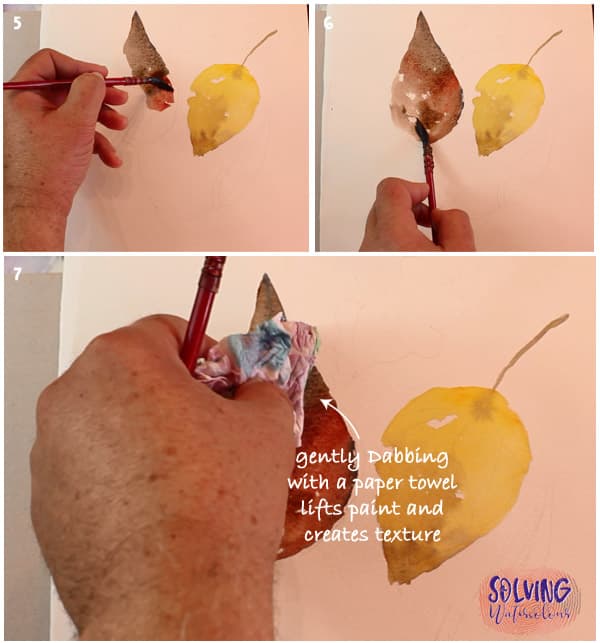
- The larger poplar leaf is obviously much further along in the decay process, it’s darker with rich reds and warm neutrals, but the painting process is basically the same as before
- I’m starting with Burnt Umber this time though and dropping in Alizarin Crimson and Burnt Sienna to create some warmer color variations.
- To give the leaf some interesting texture, I lifted some color away by gently dabbing with a paper towel.
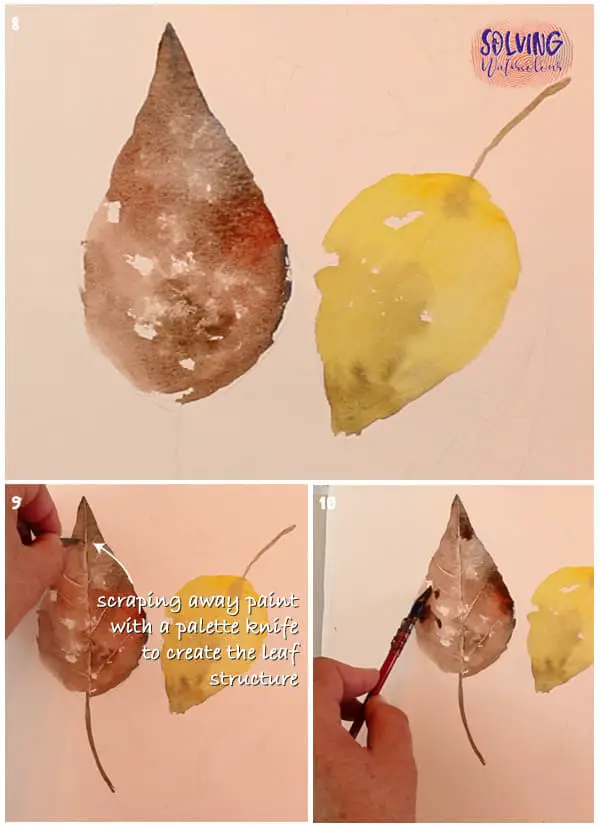
- Don’t allow the paint to dry completely as it will need to be at least partly wet for the next stage
- To create the veins of the leaf, use the edge of a palette knife, or something similar to scrape out some thin lines.
- Leaves tend to decay fastest around their edges. To indicate these darkened spots, mix a vibrant dark neutral tone using Burnt Umber, Alizarin Crimson and Ultramarine. Drop spots of this color in and around the edges of the leaf.
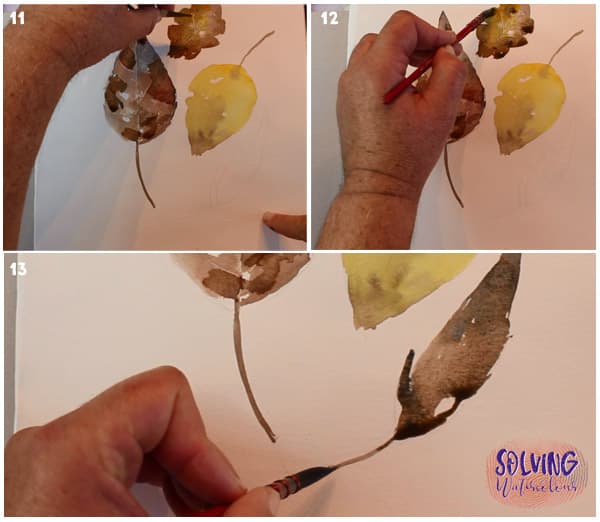
- I painted the small oak leaf next drawing from my previously mixed pool of neutrals and mixing in a little green (New Gamboge plus Ultramarine)
- As with the Poplar leaf I added some dark neutral mix around the edges and allowed that to blend in. As the original color starts to dry and more color is added, a few “Cauliflowers” start to form. Normally I would try and avoid creating cauliflowers but in this case it’s creating a nice realistic texture that I like so I’m just going to allow those cauliflowers to form naturally and even encourage them.
- The last leaf is the Pohutukawa leaf. I’ve used a variegated mix of dark neutral and ultramarine. For the hole in the leaf, I’ve left a spot of white paper and encourage the paint to pool around that spot creating some nice darks. Paint will only flow where the paper is wet, so don’t ever worry about paint flowing into your reserved areas of white paper.

- At this stage, we just need to start adding some details. So it’s time to let everything completely dry and bring out the the Rigger brush. The green poplar leaf has has veins running through it that are a slightly darker green than the leaf itself. Remember that watercolor is additive. i.e. it gets darker with every additional layer so start by adding some of your existing green mix it may already be dark enough.
- Dragging the rigger brush works works well for adding some more texture
- A little Payne’s Grey is perfect for adding some of the dark spots on the green poplar leaf.
- I felt that the whole image was maybe a bit too clean, so adding a little spatter by gently dipping the rigger in wet paint and tapping it with my finger.
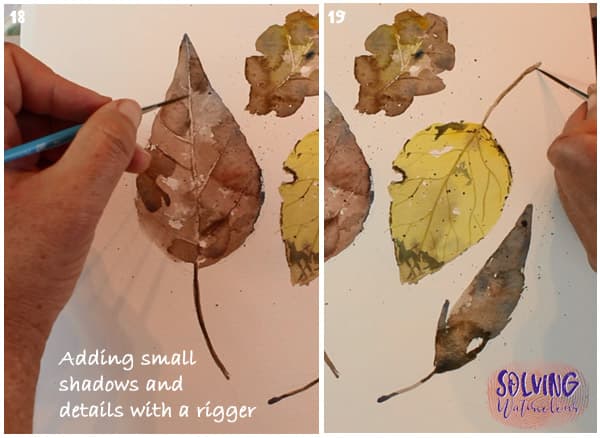
- Adding a few tiny shadows along the veins of the leaves adds a nice little touch of realism.
- Pay attention to the direction of the light and you will notice that the thin leaf stems will also have an edge that is in shadow so I carefully added those shadows. Little details like this really enhance the illusions of three dimensionality and make your paintings pop.
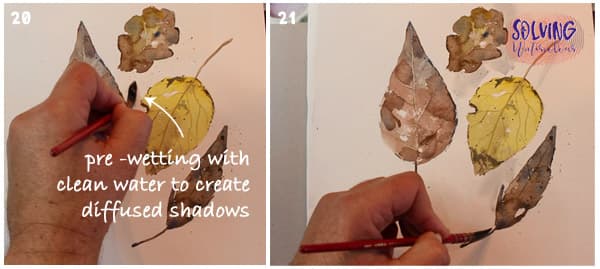
- There are multiple shadows cast by the leaves themselves. They are quite light and diffused, so, rather than create hard edges here, go back to the mop brush again and paint some clean water in the area where the shadows will be.
- Using a very pale wash of Paynes Grey, paint in the shadows. As you have already laid down a wash of pure water, the Paynes Grey will now spread out and create the effect of diffused shadows.
Here’s the finished painting. If you’d like to have a go at painting this yourself can download a hi res copy of my reference photos from here.
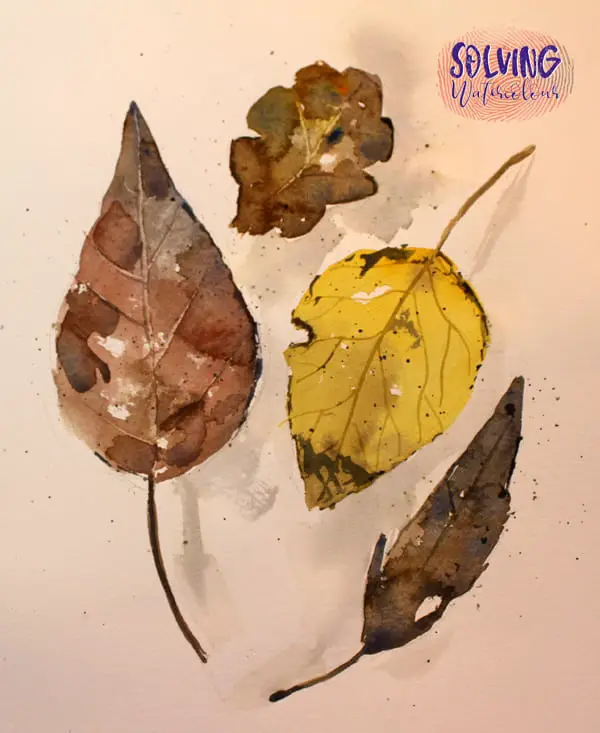
Use the mixing chart below as a guide but feel free to experiment with your own color combinations.
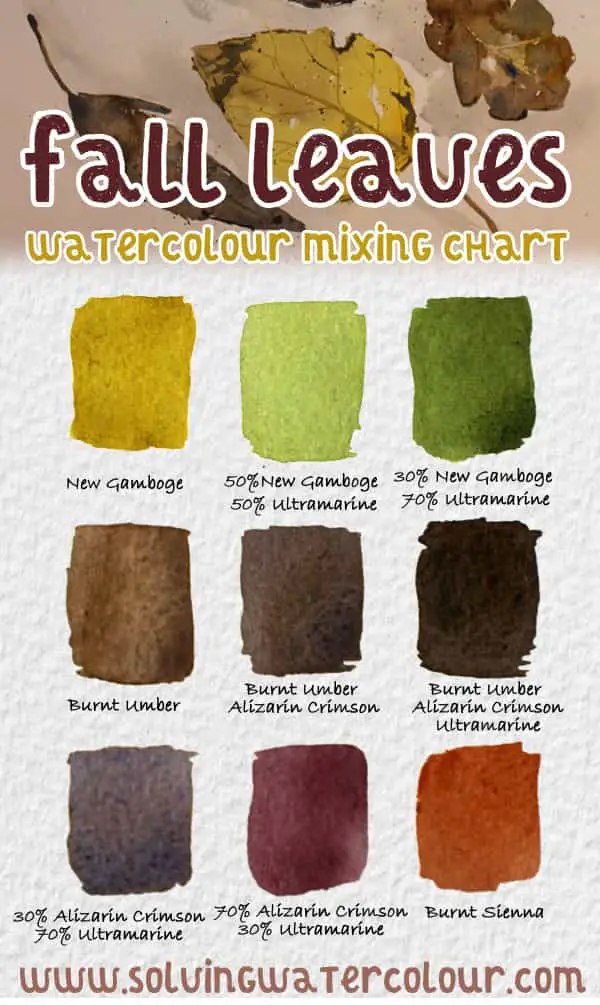
Watch The Video
Here’s the video of me painting in (Mostly) Real time from my YouTube channel . Why not have a go and follow along with me?

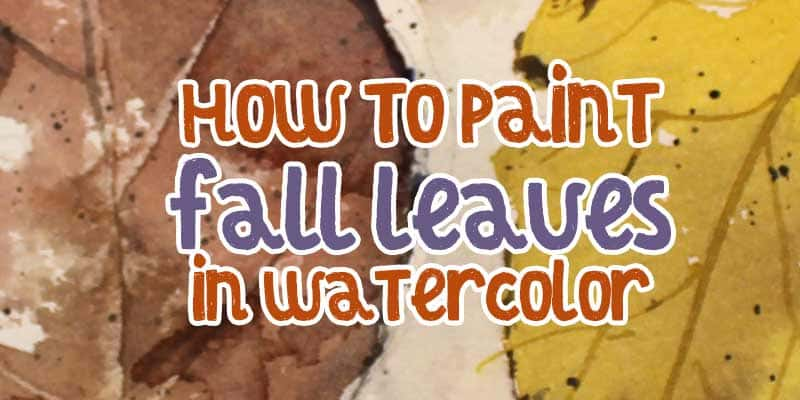


Awesome and really informative. Thank you!
Thanks. I’ll pick up a few leaves when walking the dogs in the morning.
On to the paint set up by 10:10.